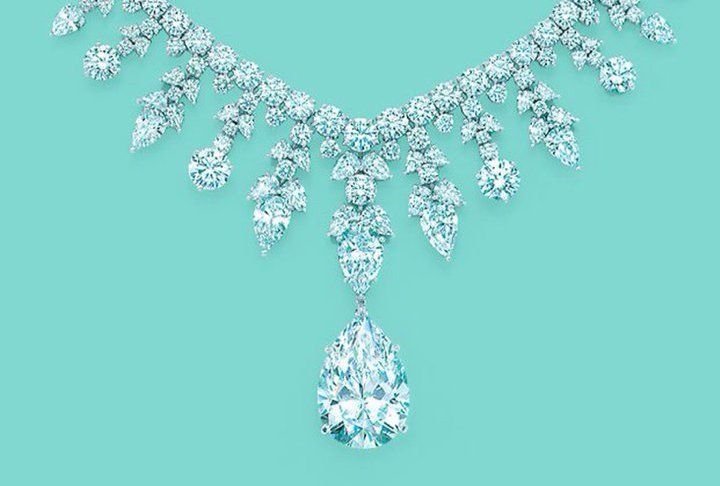Cartier is suing Tiffany & Co for allegedly stealing confidential info and 'High Jewelry' trade secrets
Cartier is suing Tiffany & Co for allegedly stealing confidential info & 'High Jewelry' trade secrets
Cartier has bought a lawsuit against Tiffany & Co (in a New York Federal Court) for trade secrets claiming that “Cartier has not only uncovered direct evidence of a former employee’s unlawful taking of Cartier’s valuable confidential information and trade secrets, but through determined investigation, Cartier has also opened a window into Tiffany’s disturbing culture of misappropriating competitive information.”
Introduction
Cartier, which is owned by Richemont, claims that Tiffany — the new jewel under the ownership of its rival, LVMH ‘used quick money and title advancement to lure away’ Megan Marino, a junior employee who previously worked at Cartier, ‘to perform a high jewelry manager role, following ‘talent departures,’ that left ‘Tiffany’s high jewelry division as being in disarray.’
The suit alleges that Tiffany’s senior leaders including Tiffany’s President and its Vice President for Merchandising then repeatedly and knowingly solicited and received confidential Cartier information from Marino “about Cartier’s North American business and specifically, its High Jewelry Division, to unfairly compete with Cartier.”
Cartier v Tiffany; the story behind the impending litigation
According to the complaint, Marino was hired by Cartier in August of 2013, where she signed an agreement to keep the company's confidential information a secret. The contractual agreement included a clause that she would maintain secrets even if hired by a competitor. The complaint claims that ‘Marino breached her contractual confidentiality and non-disclosure obligations and misappropriated Plaintiff’s confidential business information by forwarding to her personal e-mail account a large quantity of highly sensitive documents and other files related to Cartier’s High Jewelry business on December 9, 2021, only days before her resignation, ‘and did so for the improper purpose of commercially exploiting that information for the benefit of a direct competitor.’ The complaint states that ‘Marino had no business need to access the drives, files.’
It continues that in an exit interview conducted on or about December 27, 2021, Marino advised Cartier that she was leaving to work in an “entirely new space” and that she would be trying something “unknown” to her. The discussions the suit says, ‘left Cartier with the distinct impression that she was not going to be working in luxury Jewelry,’ and not ‘for a competitor’.’ Because Marino did not indicate she was joining a competitive business, Cartier says, ‘she was permitted to work through her two-week notice period, and her final day of employment was December 28, 2021.’ the complaint says.
January 2022
In early January 2022 Cartier became aware, ‘through a LinkedIn social media update, that Defendant Marino had commenced employment with Tiffany as a Merchandising Manager.’ Upon commencing employment on January 5, 2022, with Tiffany, the suit says, that on the same day ‘she met with senior colleagues; Tiffany’s Vice President, North America Merchandising, and VP of Client Relations and High Jewelry and was told that Christopher Kilaniotis, Tiffany’s President for the Americas, wanted to “pick [her] brain about Cartier.”
The commercial value of the shared information
‘The E-mailed Cartier Information constitutes, among other things, Cartier’s strategy for High Jewelry, including enough information to allow a sophisticated competitor to replicate key strategies and, with relative ease, to reverse engineer how Cartier allocates, merchandises, and prices its High Jewlery stock, and the E-Mailed Cartier Information, therefore, has enormous commercial value.’ Which, according to the suit ‘is only accessible by a limited number of Cartier employees, is not known outside of Cartier, would be extremely difficult to properly acquire.’
According to the suit, Cartier derives substantial economic value from preserving the secrecy of its confidential and trade secret information. ‘The complaint states that Cartier goes ‘to great lengths to ensure that the E-mailed Cartier Information is not known to or made available to competitors who would unfairly benefit from possessing such information, including, for example, by requiring employees to execute confidentiality agreements and by storing the information on secure servers and restricting access to Cartier’s employees.’
Cartier is seeking Injunctive relief from the courts requiring that Tiffany & Co return to Cartier, and not retain ‘of any and all business information, records or documents containing Confidential Information and Trade Secrets’ and that Judgment is entered for Cartier ‘for compensatory damages caused’ by Tiffany & Co’s ‘wrongful conduct.’
Commentary
The case is interesting not least because it involves two of the most prominent luxury jewelry brands, but also because it brings up the contentious issue of protecting trade secrets and valuable information. “Misappropriation or theft of trade secrets, according to industry estimates, is said to cost between 1-3% of GDP in developed economies” (Passman, 2014, Searle 2021). Trade secrets can encompass an extremely broad scope of subject matter, from business confidential information such as customer lists to recipe formulas like Coca-Cola.
Laid down in the WTO’s 1996 Trade-Related Aspects of Intellectual Property (TRIPS) agreement, trade secrets are intellectual property (IP) rights on confidential information and in order to be protectable the information must meet three criteria: 1) It must be a secret, 2) reasonable steps should be taken to maintain its secrecy, 3) it must derive (commercial) value from its secrecy.
The merits of the Cartier v Tiffany case
Depending on the legal system, the legal protection of business secrets forms part of the general concept of protection against unfair competition or is based on specific provisions or case law on the protection of confidential information (WIPO n.d). In the US, Trade secrets are protected by: Federal law under the Economic Espionage Act, as amended by the Defend Trade Secrets Act of 2016. specific state law requirements for, and scope of, protection vary from state to state, and in New York, the definition of trade secrets can be found in the Restatement of Torts § 757 (1939), which defines a trade secret as “any formula, pattern, device or compilation of information which is used in one’s business, and which gives him an opportunity to obtain an advantage over competitors who do not know or use it,” and can be any confidential business information that provides an organisation with an economic advantage or competitive edge.
While whether trade secret protection is violated or not depends on the circumstances of each individual case, the Cartier v Tiffany case will rest on whether the emailed information shared rises to the level of a protectable trade secret. While there was no non-compete restriction that prevented Marino from working for Tiffany, the complaint refers to provisions of Marino’s confidentiality and non-disclosure agreement upon commencement of her role at Cartier, back in 2013 which include contractual obligations of non-solicitation. Commonly, unfair practices in respect of secret information include breach of confidence and breach of contract.
Under LVMH's creative relaunch, Tiffany's high jewelry section has been a crucial aspect of the jeweler's ascent. Tiffany announced the appointment of Nathalie Verdeille, Cartier's longstanding creative director for jewelry, as vice president, artistic director of jewelry and high jewelry in July. LVMH leadership is said to be hoping to build a unison between French management's savoir-faire and Tiffany's uniquely American sensibility. The two rival luxury brands are owned by rival luxury conglomerates. Cartier is owned by Richemont, and Tiffany was purchased last year by LVMH.
Cartier has said in a statement it: “fully respects the rights of competitors to pursue their commercial objectives. In this case, however, Tiffany’s commercial ambition crossed the line between the ordinary course of business and unfair competition.”
“Tiffany formally denies these baseless allegations and intends to vigorously defend itself” assures the US firm
The original complaint details are here and the accompanying motion of law can be viewed here. For more helpful information on trade secrets, this can be found here.

